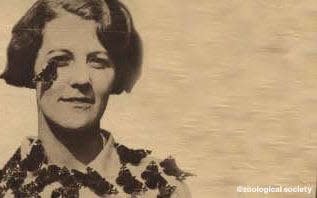Evelyn Cheesman: the 20th century entomologist who helped to open the door for women in science

To celebrate 100 years since British women were given the right to vote, The Telegraph – alongside the Mayor of London’s#BehindEveryGreatCityCampaign – is running a weekly series.
‘Hidden Credits’ looks back and celebrates individual women who have smashed glass ceilings, helped change society for the better and given the UK’s capital something to boast about.
In the early to mid-1900s, Evelyn Cheesman would have been caught escaping giant spider webs on Gorgona Island, liaising with cannibals in the New Hebrides and taking on the many other challenges of perilous fieldwork, all in the name of sourcing insects and plants for the continuation of scientific discovery.
Cheesman, a British entomologist and traveller best known for her extensive solo expeditions abroad, was born in 1881. That same year saw the opening of the Natural History Museum, which would come to host the 70,000 specimens of insects, plants and other animals that she collected.
Raised in the Kent countryside, Cheesman displayed an independent spirit from a young age, enjoying a childhood often described as feral by Beulah Garner, Senior Curator of Beetles at the Natural History Museum. With a combined love of natural history and her mother’s encouragement, her early forays into the natural world involved collecting flowers and moss in nearby fields, as well as glow worms in a bid to discover what caused their luminosity.
Though these years formed her initial hopes of becoming a veterinarian, her aspirations were blocked by the fact the Royal College of Veterinary Surgeons did not legally accept women into their ranks.

Her luck changed when, after the First World War, this finally changed, with women made legally able to become lawyers and civil servants.
Cheesman, however, had begun seeking pastures new. With a request from Professor Maxwell Lefroy of the Royal College of Science, she had accepted a temporary position at ZSL London Zoo, becoming its Assistant Curator of Insects in 1917.
Though Cheesman arrived at the Insect House to find an exhibition room practically absent of live specimens, on account of the war and the public’s lack of leisure time, she quickly sought to fill the house by looking to the British fauna with billycan and net in hand, and enlisting the help of local children.
With her efforts, the Insect House began to flourish, and by 1920 Cheesman was rightfully made the House’s first female Curator.
Cheesman’s career began to reach new heights when she embarked on her first expedition to the Galápagos Islands in 1923. An independent spirit, she soon separated from her group to explore and collect on her own, and would continue with this style of travel while collecting in Marquesas Islands and Tuamotu Atolls in 1924 and an expedition to the Society Islands in 1925.

Cheesman made many further expeditions in the New Hebrides (now Vanuatu) and South West Pacific including New Guinea and New Caledonia after leaving ZSL London Zoo in 1926. However her big break came at the age of 48, when she undertook her first expedition to collect insects and small animals for the Natural History Museum.
Natural conditions were a constant source of challenge for Cheesman, who grappled with tropical diseases such as dengue fever, as well as an onslaught of deadly snakes and spiders - not to mention finding a leech in her teapot.
“The best evidence of her good relationships with indigenous people is in her contribution to our collections,” Garner said of Cheesman. “That and the fact she survived. She wouldn't be around to tell the story if she wasn't trusted, so she must have been getting along with people.”
Indeed locals in New Guinea called her ‘the woman who walks’ to reflect her rejection of the sedan chairs typically used to transport white women there.

“She was very interested in indigenous customs and was very respectful of them in her writings, which are markedly different from the majority of imperial exploratory literature”, Garner adds.
In spite of her obvious flair for embedding herself among locals, the Archbishop of Canterbury and the High Commissioner of the New Hebrides were apprehensive about women’s safety, and subsequently tried to put an end to her solo expeditions - thankfully, to no avail.
In 1953, Cheesman would make her last grand voyage to Vanuatu at the age of 73, following a hip replacement. Two years later, she was awarded an OBE and a Civil List pension for her contributions to entomology. Retirement was not on the cards for the explorer, though, who continued to work at the Museum, writing and classifying specimens, until her death in 1969.
"She was incredibly determined," Garner notes, "and her achievements have undoubtedly helped open the door for women in science."

